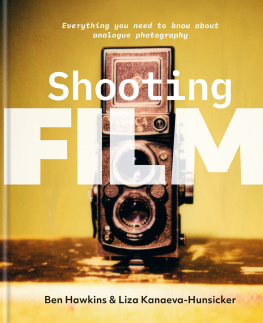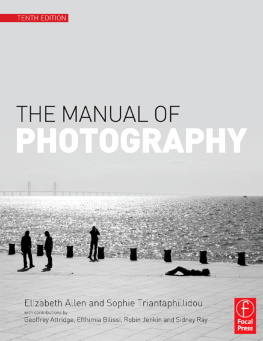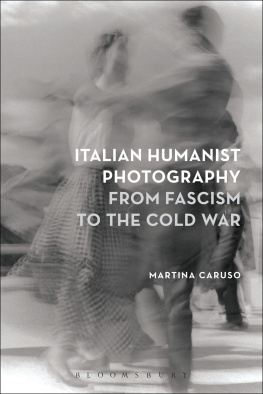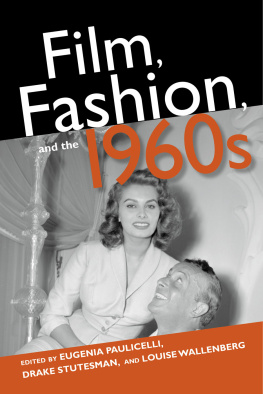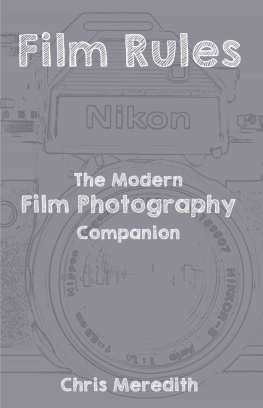OTTO Elizabeth - The New Woman International: Representations in Photography and Film from the 1870s through the 1960s
Here you can read online OTTO Elizabeth - The New Woman International: Representations in Photography and Film from the 1870s through the 1960s full text of the book (entire story) in english for free. Download pdf and epub, get meaning, cover and reviews about this ebook. year: 2011, publisher: University of Michigan Press, genre: Romance novel. Description of the work, (preface) as well as reviews are available. Best literature library LitArk.com created for fans of good reading and offers a wide selection of genres:
Romance novel
Science fiction
Adventure
Detective
Science
History
Home and family
Prose
Art
Politics
Computer
Non-fiction
Religion
Business
Children
Humor
Choose a favorite category and find really read worthwhile books. Enjoy immersion in the world of imagination, feel the emotions of the characters or learn something new for yourself, make an fascinating discovery.

- Book:The New Woman International: Representations in Photography and Film from the 1870s through the 1960s
- Author:
- Publisher:University of Michigan Press
- Genre:
- Year:2011
- Rating:5 / 5
- Favourites:Add to favourites
- Your mark:
- 100
- 1
- 2
- 3
- 4
- 5
The New Woman International: Representations in Photography and Film from the 1870s through the 1960s: summary, description and annotation
We offer to read an annotation, description, summary or preface (depends on what the author of the book "The New Woman International: Representations in Photography and Film from the 1870s through the 1960s" wrote himself). If you haven't found the necessary information about the book — write in the comments, we will try to find it.
OTTO Elizabeth: author's other books
Who wrote The New Woman International: Representations in Photography and Film from the 1870s through the 1960s? Find out the surname, the name of the author of the book and a list of all author's works by series.
The New Woman International: Representations in Photography and Film from the 1870s through the 1960s — read online for free the complete book (whole text) full work
Below is the text of the book, divided by pages. System saving the place of the last page read, allows you to conveniently read the book "The New Woman International: Representations in Photography and Film from the 1870s through the 1960s" online for free, without having to search again every time where you left off. Put a bookmark, and you can go to the page where you finished reading at any time.
Font size:
Interval:
Bookmark:
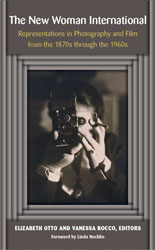 Foreword: Representing the New WomanComplexity and Contradiction
Foreword: Representing the New WomanComplexity and Contradiction It is as hard to define what we mean by the New Woman as it is easy to find examples of her ubiquitous image not only in Western Europe but throughout the world in the era extending from the fin-de-sicle to the 1930s, and even to the decades beyond. Is the New Woman quintessentially defined by the photography and film of Weimar Germany in such figures as Louise Brookss Lulu in G. W. Pabsts film Pandoras Box (1929): seductive, self-aggrandizing, sexually ambiguous? Or is she more truly embodied in the courageous activism and professional expertise of the American aviator Amelia Earhart? Is the New Womanenvisioned as vamp or seductressmerely an updated avatar of a time-honored female topos: a streamlined version of Delilah; Salome; or, more recently, Becky Sharp or Mata Hari? Or is she a stalwart fighter for equal rights, the suffrage, and meaningful work for women, a battler for female independence and self-determination most poignantly embodied in photos and posters of Republican women engaged in the Spanish Civil War? Certainly, these two visions are not identical; indeed, they are contradictory, although there are many images, like Tamara de Lempickas Self Portrait in a Green Bugatti of 1925, showing the elegant artist at the wheel of her high-powered car, that attempt to weld the sexy with the self-propelling. Yet what all New Images of the New Woman do have in common, flapper or vamp, political revolutionary or suffragette, is a heartfelt rejection of womans traditional role as it was defined by every society in the world: rebellion against oppressive notions of the womanly understood to be a life devoted to subordinating ones own needs and desires to those of men, family, and children.
Certainly, it is hard to see the filmic Lulu as an embodiment of female agency in the best sense of the word. Yet at the time, and even today, she provided a powerful visual and psychological model for young women Page vii trying to find their way in what might be called, to borrow from Bertolt Brecht, the jungle of the city, women on their own, seeking a viable identity in an alluring but dangerous modern setting.
This publication grew out of an exhibition, Louise Brooks and the New Woman in Weimar Cinema, and an accompanying symposium, Exhibiting the New Woman: Louise Brooks, Amelia Earhart, and Marianne Brandt, which took place at the International Center of Photography in New York in 2007. The subjects of the individual talksLouise Brooks, an American actress who made her reputation in a German film; Amelia Earhart, an American aviatrix whose deeds and image achieved international renown; and Marianne Brandt, a German artist who specialized in metalwork and collagewere placed in a larger context of representations of the New Woman, particularly those conflicting demands of reaction and progressivism in Weimar Germany in which Brooks and Brandt created their work.
However, one of the key contributions of The New Woman International is the way in which it broadens the scope of this gendered paradigm. Too often the discussion of this powerful Woman has been limited to either the flapper of Weimar or the hearty suffragist in the turn-of-the-century United States and Great Britain, with little or no crossover in those discussions and rare applications of them to regions beyond. In fact, not only did this image cross-pollinate across the Atlantic in the 1910s, 1920s, and 1930s, but it spread throughout all of Europeincluding Eastern Europeand into Asia, aided and abetted by globally proliferating mass media outlets. The image of Louise Brooks and other fashionable figures were popular in Japanese, Mexican, Euro-American, and other nationally based magazines around the globe. And Asian countries formulated their own responses to this alluring construct so popular with female consumers through such cultural ambassadors as Butterfly Wu (Hu Die), a stylish leading actress who traveled to film festivals in Moscow and Berlin in 1935, causing a reevaluation of stereotypes of Chinese women.1 Moreover, as The New Woman International brings clearly into focus, distinctly non-Western forms of New Womanhood were developed in and contributed to this global phenomenon.
In general, the New Woman, wherever she might be, was a beacon to the adventurous and a threat to the upholders of traditional values. To female youth, the New Woman offered a paradigm of liberation and agency: liberation from corsets, long hair, and bulky skirts; bodily freedom through Page viii participation in sports and dance; and, equally important, liberation in the even more encumbering realm of ideology. It was liberation from the ideal of true womanhood, the bondage of marriage and self-sacrifice, the denial of achievement through career and work outside the home, and, above all, sexual subordination and submission. It was even liberation from the notion that sexuality and gender were unambiguous givens.
The notion that any form of independence was masculinizing, that women were made to have purely domestic roles, and that efforts to achieve self-realization were selfish and unnatural had of course been successful weapons in the battle to keep women in line for many years. But these consciously articulated positions were supported by deeply embedded, often repressed, unconscious attitudes of misogyny on the part of traditional social institutions and the menand some womenwho supported them. Even some of those on the political Left subscribed to traditional notions where gender was concerned. Fear and hatred of women, characterized as either dangerous whores or harmlessmothers, the threat of unfettered female sexuality and its dire temptations, the despising of feminine softness and shapelessness, a complex of often contradictory emotions vis--vis the female sex, haunted the German masculine imagination (and in varying forms those of many other nations as well). Klaus Theweleits penetrating study of the German Freikorps after the First World War, Male Fantasies, is required reading for an understanding of this sinister phenomenon at its most intense, as is, of course, the work of Sigmund Freud.2
The recent exhibition at the Metropolitan Museum of Art, Glitter and Doom: German Portraits of the 1920s (2006), should be reviewed with the New Woman theme in mind.3 For the New Woman was, for the most part, savagely and seductively pilloried in Weimar art, by male artists to be sure: the modern female embodied as voracious, grotesque, and sexually provocative, ambiguously feminine in her boyish haircut and loose but revealing vamp attire. To artists such as George Grosz and Otto Dix, woman in general but particularly the New Woman was the very embodiment of the degeneration and duplicity of the social order itself.
Behind the triumph of the New Woman and her representation, especially in Weimar Germany, in both high and popular culturemagazines, novels, filmslies the frightening imagery of the Lustmord, the sex murder, a popular theme at the same time. One might even think of the sex murder theme as a response of terrified males to the various manifestations of womans liberation and the New Woman herself. Beth Irwin Lewiss pioneering work on the subject of the sex murder is essential to any discussion Page ix of the New Woman theme, as is Maria Tatars Lustmord: Sexual Murder in Weimar Germany.4 The sex murder topica staple of mass journalism to this dayis amply illustrated by multiple horrific images by Grosz, Dix, Rudolf Schlichter, and Oskar Kokoschka (who wrote a vanguard play on the theme), and many others. On the dark side of the triumphant representation of the New Woman lie the misogynistic representations of outraged male fantasy: Hans Bellmers eviscerated dolls, etchings of torn underwear and mutilated female flesh, blurry photos of crime scenes, and the paradigmatic figure of Jack the Ripper, who features as the dark figure of fate bringing the liberated heroine to her doom in
Font size:
Interval:
Bookmark:
Similar books «The New Woman International: Representations in Photography and Film from the 1870s through the 1960s»
Look at similar books to The New Woman International: Representations in Photography and Film from the 1870s through the 1960s. We have selected literature similar in name and meaning in the hope of providing readers with more options to find new, interesting, not yet read works.
Discussion, reviews of the book The New Woman International: Representations in Photography and Film from the 1870s through the 1960s and just readers' own opinions. Leave your comments, write what you think about the work, its meaning or the main characters. Specify what exactly you liked and what you didn't like, and why you think so.

